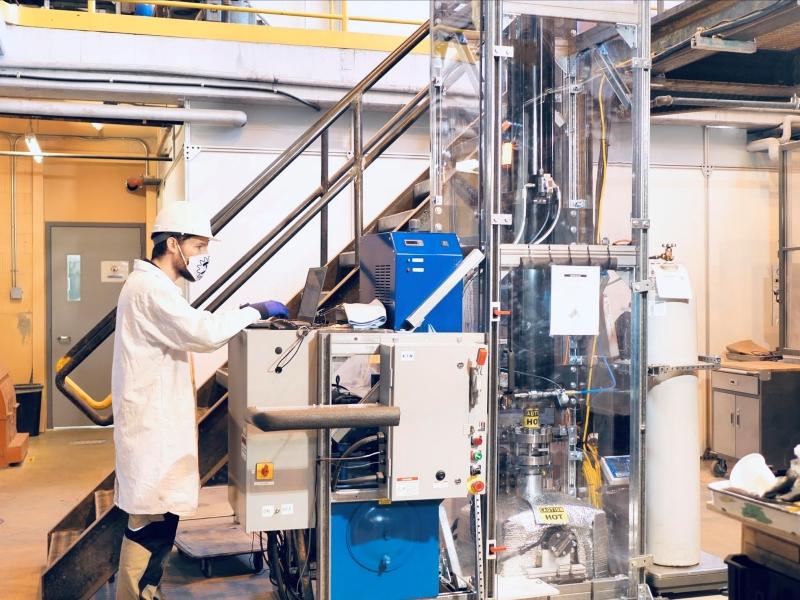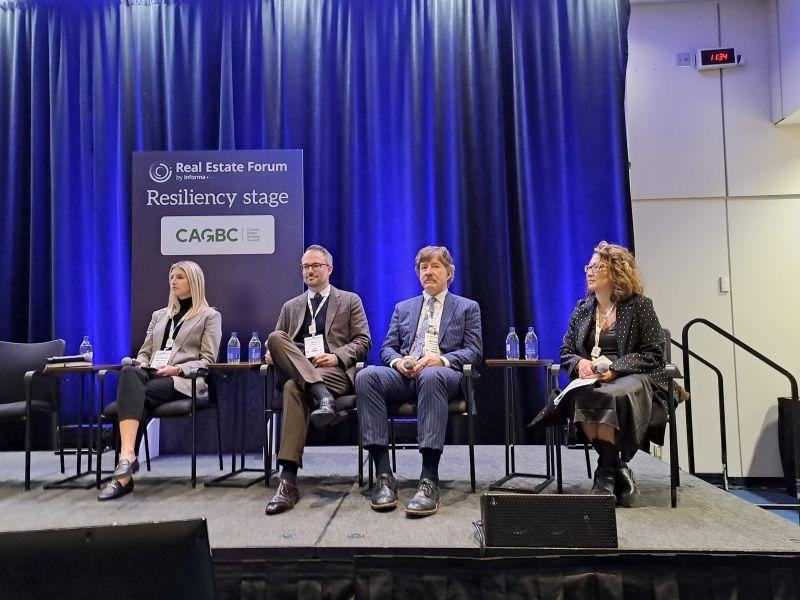
A journey from a mechanic’s garage in St-Felix-de-Kingsey, Que. to a bus manufacturer that sees electric transportation as the future of the industry is the story of family-owned Girardin.
The company originated from a family of blacksmiths that switched to repairing cars in the 1940s. Its road to the bus business started when founder Lionel Girardin took on school bus contracts in 1958, repairing and repainting discarded buses from a junk yard, a story his grandson Steve Girardin recounted to Sustainable Biz Canada.
Today, Drummondville, Que.-headquartered Girardin is a company that manufactures school bus bodies, distributes gas-powered and electric buses in Canada and covers parts, support and charging infrastructure.
With investor Blue Bird, Girardin partners on Micro Bird Inc., a joint venture that manufactures smaller buses, led by Steve Girardin as CEO.
After announcing an electric minibus with improved range this month, Girardin said the transition to electric vehicles (EVs) is a trend in which the company is heavily engaged, amid improvements in technology and infrastructure that must be adapted for a smoother ride to electrification.
“All these challenges that people have to go through to put in the infrastructure, it’s something that slows down the electrification movement a little bit, but once it catches up, I think you’ll see electricity is gonna be a preferred technology over time.” Girardin said.
Early steps in electrification
After its establishment as a bus dealership and support company, Girardin became a Blue Bird dealer in 1968. The company began to make buses at its Drummondville factory in 1991 (now 200,000 square feet), helped by a Blue Bird investment in 2009. Today it distributes larger Blue Bird buses and Micro Bird’s small buses designed for schools, shuttle and city transportation uses.
The company was dabbling in the technology in the 1990s, Girardin said, well before EVs came into vogue with an increasing focus on sustainability and the impacts of carbon-based fuels. The battery technology was not up to par then, so the company hit the brakes on EVs. But as battery quality improved in the 2010s, the electric bus sector was resuscitated.
“Purer lithium-ion batteries started coming out and being more promising, so we started the journey about 10, 12 years ago in electrification and just started looking at technologies and what we could integrate,” he said.
The social pressure to reduce greenhouse gas emissions is a key driver of the change, backed by government mandates to support electric transportation, he added.
The company serves as a dealership for electric models such as the Micro Bird G5e minibus and Blue Bird’s TX4 commercial flat-nose bus. The G5e was unveiled in Reno, Nev. in July and offers approximately 300 kilometres of range per charge.
In addition to buses, Girardin installs charging infrastructure via its Girardin Energy division. Its subsidiary Ecotuned manufacturers EV powertrain equipment.
As a private company, Girardin keeps sales details confidential. In 2021, Girardin reported having agreements to deliver 1,200 electric buses to over 90 clients in Quebec. The province has a goal of electrifying 65 per cent of its school buses by 2035.
The Micro Bird CEO could reveal the company expects electric buses to make up approximately 10 per cent of its sales in 2025. “It’s an evolving and growing segment right now,” Girardin said.
Electric bus sales are expected to comprise 20 to 25 per cent of the market in the next three years.
Driving past the EV barriers
Switching to EV manufacturing and distribution has been a learning experience, Girardin said. The proliferation of EVs has pushed the company to learn new ways of repairing and diagnosing problems.
“We have to adapt to that new mentality and technology. It’s a matter of learning and discovering what we never knew . . . We’re learning exponentially fast and this is where the new architecture really takes a leap forward in range and design.”
Girardin has been helped by the adoption of EVs. The challenge with electric transportation over the past decade was the lack of commercially available scale or pricing, Girardin explained. But as more EVs have hit the road, affordability has increased, as well as improved performance and availability of components.
Infrastructure remains the biggest obstacle to operators like Girardin. Electric grids are still largely unprepared for mass EV adoption and do not have features like three-phase electricity that allows for more power and faster charging, he said.
Yet he is still optimistic EVs will forge on. Sales figures have been in the range of Girardin’s expectations. The G5e generated more interest than expected, being a pleasant surprise to the company.
Despite news of EV adoption rates slowing, Girardin said sales are still rising even on the electric school bus side. Unlike peers like Lion Electric that showed signs of struggle, Girardin has managed to stay in “great health” because it did not go all-electric and has a cushion of traditional fuel-powered buses, he said.
“Hedging our bets has really been significantly beneficial and made sure that we took a healthy way forward through this.”










